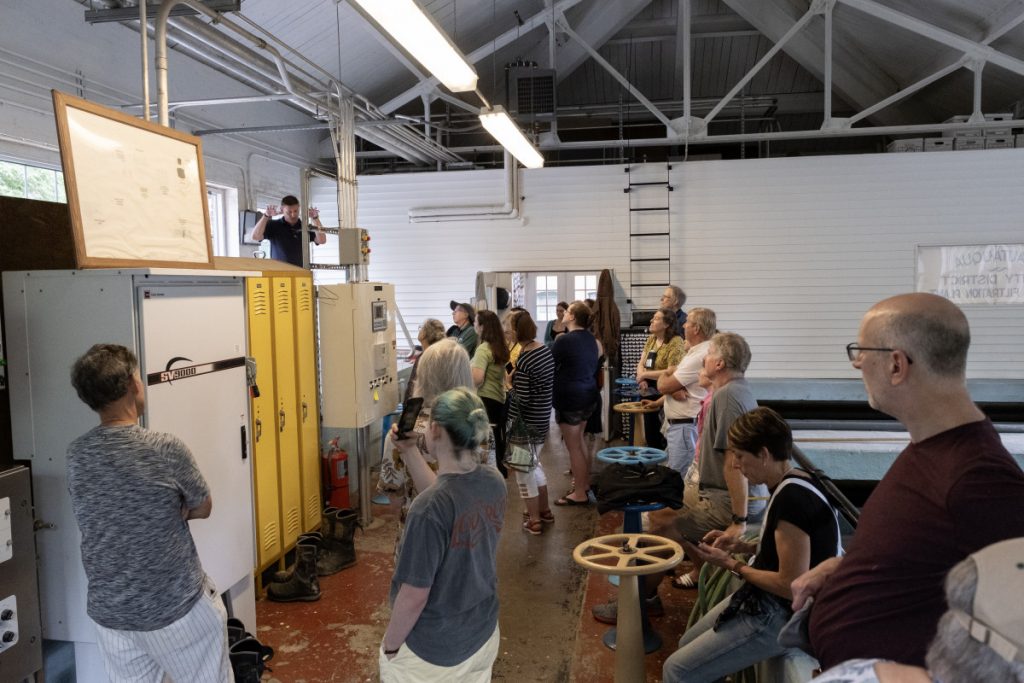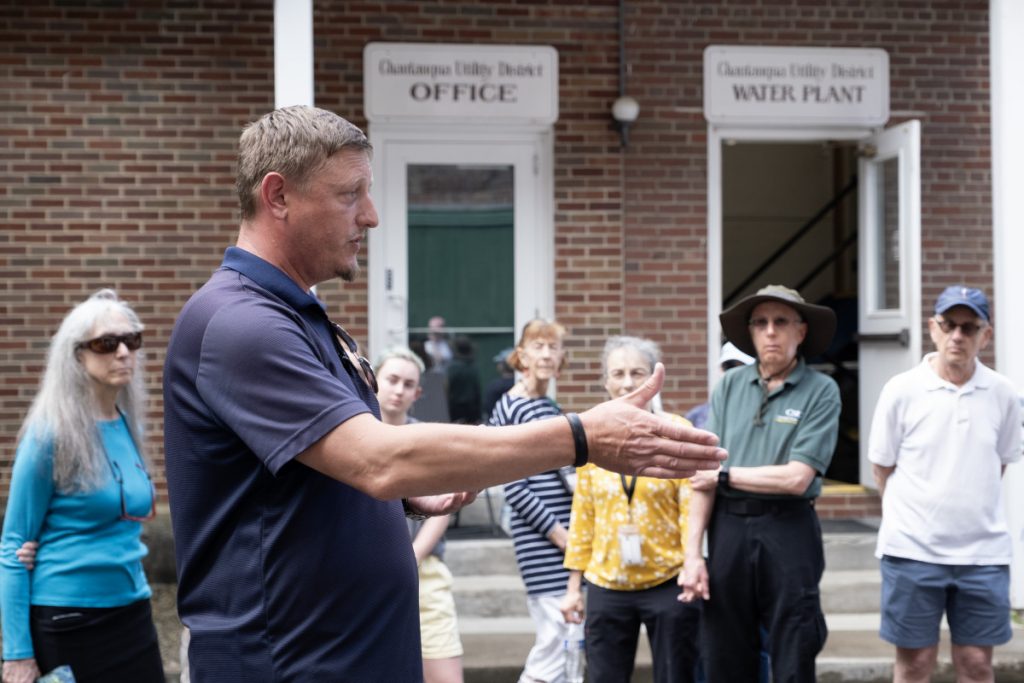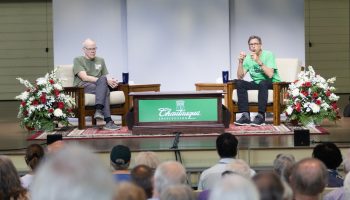
Mariia Novoselia
Staff writer
Even without the word “lake” in the name of the Bird, Tree & Garden Club, the major body of water bordering Chautauqua Institution is certainly on the minds of its members.
BTG hosts lake walks each week featuring a different focus. At 4:15 p.m. today starting at the lake’s shoreline and wetland gardens, Jonathan Townsend will talk about edible and medicinal plants found on Chautauqua’s shore.
At last week’s event, no sooner did Dede Trefts, director of lake walks with BTG, say that BTG was thrilled to see clear weather, than the heavens opened up, sending a warm summer downpour splashing all over Chautauquans.
However, that did not scare off more than 30 members of the community who gathered by the Pier Building to learn about the ins and outs of the local water treatment facility from Mike Starks, superintendent of Chautauqua Utility District.
Thanks to Chautauqua Lake, Starks said, CUD is “fortunate enough to have an unlimited supply of water” that the facility draws from the lake, treats and sends out to consumers.
Public health, he said, is the organization’s first and foremost priority.
“We take great pride in making sure that whatever we send out to you, or whatever we return from our wastewater plant to the lake, is absolutely clean and the best we can possibly do,” Starks said.

CUD does nine bacteriological samples per month and sends them to the Chautauqua County Health Department. Starks said during the almost two decades of his work for the organization, they had never failed the tests.
To clean the water, the organization adds a solution called sodium hypochlorite that contains a 12% to 15% concentration of bleach. By comparison, household bleach has a concentration of 2%.
Unlike the water treatment facility, the district’s wastewater plant does not use any chemicals to clean water, Starks said. The new, fully biological system was introduced after the plant was completely renovated at the beginning of 2020.
“It’s a blessing for the lake that we are not sending any additional chemicals,” he said.
The red brick building behind the Colonnade houses CUD’s two-story water treatment facility. It began much smaller, yet was rather revolutionary.
Around the late 1890s, Starks said, sewers were installed in Chautauqua, making it one of the first fully-sewered communities in the eastern United States. The building itself was built in the late 1920s and was originally only a filtration system.
The Clean Water Act of 1972 is largely responsible for the size of the facility now, Starks said.
Even though the building is on the grounds of the Institution, Starks said, the organization also provides services “outside of the fence.”
For example, he said, the system accepts sewage from North Chautauqua Lake Sewer District and sends water to Chautauqua Shores and the new Mandolin Ridge development, with discussion ongoing of possible expansion toward Mayville.
The district has a reserve of about 1 million gallons of treated water at any given time, mainly for fire protection. Considering how close some of the houses on the grounds of Chautauqua are, he said, they always need to be at the ready – if one ignites, there could be multiple consequent fires.
Inside the plant reigns a multitude of pipes, valves and tanks. There are two pumps that run one at a time and rotate every month, Starks said, similar to how other machines at the facility work. Filters are the exception – there are three, and two of them run at the same time.
If someone was to take a sample of water from one of the tanks, Starks said, they would see that it has a pink tint. This is because of magnesium that is used to remove all the oxygen from water. This is done to remove all living organisms.
Starks said a similar method was employed during both World War I and World War II. He said soldiers were given crystals of magnesium to put in the water they found in the battlefield to make it safe for consumption.
“It’s cool that we’re still using that today – just on a different scale,” he said.
Aluminum sulfate, which acts as a coagulant to make dirt particles stick together, is also added to the water. This increases the particles’ weight and makes it easier for them to fall out of water, Starks explained. Liquid aluminum lowers the pH of water, so the next step is to add potassium carbonate to neutralize acidity.
Michele Keane, one of the Chautauquans who attended last week’s lake walk, said Starks did an excellent job explaining the facility. Having been to several BTG lake walks over the years, she said she chose to attend this one because she gets a lot of questions from people who know she works in the water treatment business.
“I wanted to make sure I don’t give them the wrong answers,” Keane said.
In a recent weekly newsletter, Leslie Renjilian, president of BTG, wrote that lakes have been part of BTG’s agenda since 1952 and the club encourages its members to take care of the lake.




